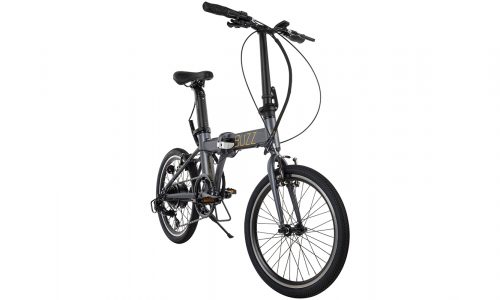Home » Gear Reviews » Biking » Bike Racks For Cars & SUVs » Rhino Rack Dual Trekker
Rhino Rack Dual Trekker Review
January 28, 2017









 82
82 The Good
- Great clearance for hatch access
- Very stable/tight joints
- Variable hitch receiver size compatible
The Bad
- Heavy
- Not expandable for more than 2 bikes
- No lateral adjustments
The Rhino Rack Dual Trekker is a solid bike rack. With the most stable folding joints, it has the potential to be the most stable save for the standard screw-in hitch-pin securing system. The Dual Trekker is one of the few racks that comes with a bike lock system included and it provides the most room for rear vehicle access thanks to the generous tip-away range.
Setup
Unpacking and assembling the Dual Trekker is relatively easy and on par with most of these sorts of racks. It does require having some garage or driveway space to start assembling the parts that then attach to the main stem that mounts to the hitch. When doing this on the ground, it takes a bit of work while bending over. A large sturdy work table surface is ideal. For the main assembly process only two tools are required, but for 1.25” hitches, another 6mm allen wrench is needed to remove the 2” spacer sleeve bringing the tool total to three. Although it’s not suggested in the instructions, the final attaching of the crossbars could be done while the main portion of the rack is sitting in the hitch to make it a little easier on the assembler’s back.
Stability
Like most racks in this test, the Dual Trekker uses a 1/2“ threaded locking pin/bolt and by tightening it down, it does pretty well at keeping the rack stable, though it still has some up/down movement in the hitch receiver. The Dual Trekker has the most stable pivot hinge of the racks tested but that comes at the cost of it being a little more difficult to move up and down from the storage position to the ready-to-load position.
Ease of Use
The Rhino Rack Dual Trekker is on par with other racks of this type and of most of those in this test to use. Like most, the lever to release the rack from the storage position down to be ready to load bikes is towards the front of the rack (closest to the vehicle). This is not a big deal when there are no bikes on the rack, but once bikes are loaded, it requires the user to reach through the bikes to release the lever to tip the rack back to access the rear hatch. It also means the user needs to be properly braced and ready to support the weight of the bikes to ease them down with one arm while releasing the lever. Loading and unloading bikes is average with the ratchet arms and hooks being easy to use. The squeeze style release on the ratchet hook is easier to use than the thumb-press style since the user can use their whole hand to operate. Not a big deal in most cases, but sometimes that ratchet hook does get a little stuck when pushing against the pressure of the bike tire.
Versatility
The Dual Trekker comes with an 1-1/4“ spine and a 2” adaptor to fit the most common hitch sizes. Other than that, versatility is pretty limited. It does claim on the website to be able to accommodate “wide tires” and we strapped a fat tire bike on just to see. While 4” fat tires won’t fit into the 3” wide wheel cup, the straps and ratchet hook did fit on and over the tires to secure the bike to the rack. Attempt at your own risk. There is no option to add on extra racks to carry more than two bikes.
Features
The outstanding feature for the Dual Trekker is the included lock system. Instead of integrating locks in each of the ratchet arms, Rhino Rack kept it simple with a single lock cable that loops around the bikes and locks onto the hitch pin, thus, locking the whole rack to the vehicle. The disadvantage of this system is it requires the user to squeeze in between the bikes on the rack and the back of the vehicle to get to the hitch pin to lock and unlock the cable. To make locking a little easier, the hitch pin lock can slide on and snap into place with one hand—most others require two hands to hold the lock while turning the key. The advantage to this system is the bikes don’t have to be on the rack to be locked up. The cable could just as easily run through the bike frames while they are parked next to the rack for a lunch break or other reason to leave everything between rides. The Dual Trekker also provided the best clearance in the test when the rack tipped away from the vehicle.
Cameron Martindell
- Test Director & EditorCameron Martindell is the Gear Institute's Gear Test Director, responsible for coordinating our gear testing team, recruiting new experts, and maintaining the Gear Institute's editorial standards for product testing.



















